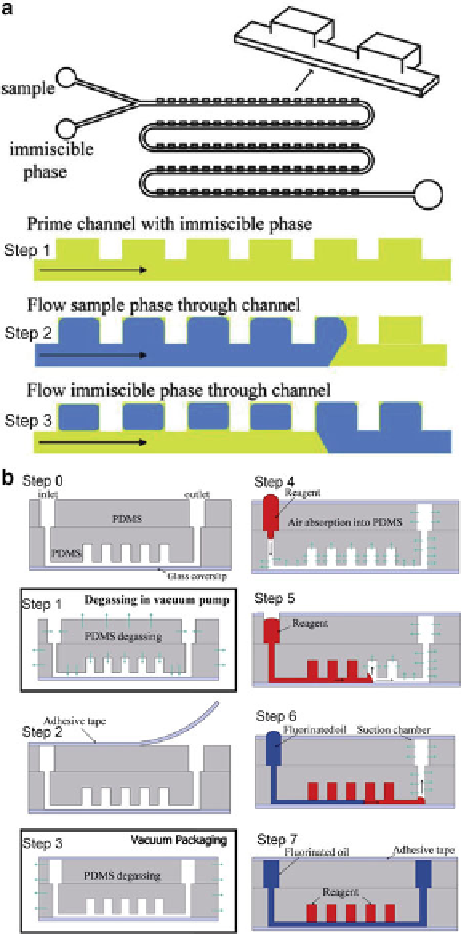Biomedical Engineering Reference
In-Depth Information
Fig. 7.15
Digital PCR
on self-digitization chips. (
a
)
The channel is first primed
with an immiscible oil, which
is followed by sequential
injection of sample phase and
the immiscible oil, so the
sample is displaced from the
main channel yet remains in
the side chambers (Reprinted
with the permission from Ref.
[
79
]. Copyright 2010
American Chemical Society).
(
b
)
Step 1
: Degassing of the
microchip in a vacuum pump.
Step 2
: The adhesive tape is
attached after the degassing
of the microchip.
Step 3
:
Storage at low pressure (e.g.,
vacuum packaging).
Step 4
:
Dispensing of the PCR
reagent on the inlet after the
adhesive tape is punctured.
Step 5
: Degassing-drive flow
propels the sample into the
micro-wells.
Step 6
:
Sequential dispensing the
fluorinated oil into the inlet,
the oil is self-primed into the
channels, and the micro-wells
are partitioned individually
by the oil.
Step 7
: Sealing by
adhesive tape after the extra
sample is pushed out of the
suction chamber by the oil
(Reproduced from Ref. [
80
]
with permission of The Royal
Society of Chemistry, and the
figure file is a gift from Dr.
Ying Mu)
on SlipChip [
83
]. Chiu and coworkers and Mu and coworkers performed LAMP in
the self-digitalization chip [
74
,
80
].
Breaking through the limitation of binomial statistics that requires the uniform
volume, Ismagilov and coworkers presented a theory and an experimental validation
for the design and analysis of digital PCR devices that rely on multiple sets of
wells, each set of a different volume [
75
]. This multivolume digital PCR enables
quantification of nucleic acids with wide dynamic range and high resolution while

Search WWH ::

Custom Search